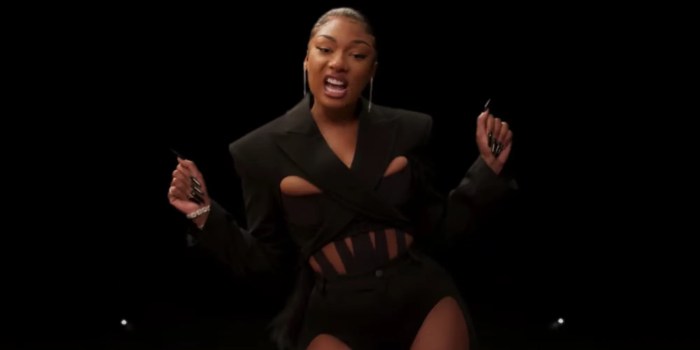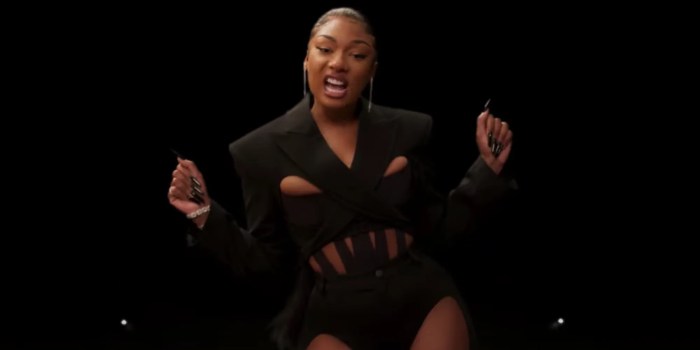Tile Shower Niche Without Bullnose offers a fresh take on shower design, ditching the traditional bullnose edge for a sleek, contemporary look. This approach opens up possibilities for unique aesthetics and innovative installation methods, all while maintaining practicality and functionality. Imagine a shower niche with clean lines and uncluttered surfaces, perfect for showcasing your favorite tiles and maximizing space.
This exploration dives into the design, installation, and maintenance considerations of this modern trend.
The design implications of omitting a bullnose are multifaceted, affecting water runoff, drainage, and the overall aesthetic. Different tile types and installation techniques play a vital role in achieving a polished and practical result. This comprehensive guide will walk you through every step, from initial design to long-term maintenance.
Introduction to Tile Shower Niches Without Bullnose
A tile shower niche is a recessed area in a shower wall, typically used for storing toiletries or enhancing the aesthetic appeal. It’s a functional and decorative element that can significantly impact the overall design of the shower space. A key element in tile work, often overlooked, is the bullnose.The bullnose is a curved, rounded edge on a tile.
It provides a smooth, protective edge and a visually appealing transition between the tile and the surrounding surface. Omitting the bullnose in a shower niche can have a profound effect on the final aesthetic and create a different, potentially more contemporary or industrial look.
Design Implications of Omitting a Bullnose
By removing the bullnose, the edges of the niche become sharper and more defined. This creates a more modern and potentially industrial feel. The lack of the rounded edge highlights the tile’s material properties and grout lines more prominently. This design choice can be particularly effective when used in conjunction with specific tile types and grout colors.
Aesthetic Variations Possible Without a Bullnose
The absence of a bullnose offers a spectrum of aesthetic variations. A simple, clean look can be achieved by using a minimalist tile layout with consistent grout lines. On the other hand, a more dramatic or textured effect can be achieved by using tiles with intricate patterns or unique surface finishes. The overall effect is highly dependent on the choice of tile, grout, and overall design scheme of the shower.
Examples of Tile Types
A variety of tile types can be used in a shower niche without a bullnose, each offering a distinct aesthetic. Porcelain tiles, known for their durability and water resistance, are a popular choice for shower niches. They are available in various colors, sizes, and patterns, allowing for a wide range of design options. Ceramic tiles, another robust option, often offer a more traditional or rustic feel.
Glass mosaic tiles are ideal for creating a unique visual statement, adding a touch of artistry and a dynamic play of light and shadow. Natural stone tiles, such as slate or travertine, provide a sophisticated and luxurious feel. Their natural variations in color and texture can create a truly one-of-a-kind design.
Design Considerations for Tile Shower Niches Without Bullnose

Omitting the traditional bullnose edge in a tile shower niche presents both exciting design possibilities and practical considerations. The clean, unadorned lines can create a modern, minimalist aesthetic, but careful planning is essential to ensure proper water management and long-term durability. The absence of the bullnose directly impacts water runoff, drainage, and overall maintenance, so a thorough understanding of these factors is critical for a successful installation.The lack of a bullnose, a rounded edge on the tile, directly affects the way water flows and drains.
Without the subtle curve, water can potentially pool or linger in certain areas, increasing the risk of mold and mildew growth. Thoughtful design choices are crucial to counteract these potential issues and create a safe and aesthetically pleasing space.
Water Runoff and Drainage
Careful consideration of water runoff patterns is paramount when designing a shower niche without a bullnose. The straight edges of the tiles can create distinct channels for water flow. Installing the niche with proper slope toward the drain is vital to ensure efficient drainage. Improper slope can lead to water pooling and potential damage. A slight, consistent slope, ideally 1/4 inch per foot, is essential to facilitate rapid water removal and prevent standing water.
Effect on Overall Shower Design
The absence of a bullnose dramatically alters the overall aesthetic of the shower. The sharp, clean lines can evoke a modern, contemporary feel. This allows for greater flexibility in the choice of tile patterns and colors. Large-format tiles, for example, can make a significant impact in a niche without the visual interruption of a bullnose. However, this very clean aesthetic can also feel stark if not carefully balanced with other elements of the shower design, such as the surrounding walls or fixtures.
Consider the overall color palette and tile size when making decisions to maintain visual harmony.
Achieving a Clean, Modern Aesthetic
Achieving a clean, modern aesthetic in a niche without a bullnose requires careful selection of tiles, grout, and fixtures. Using high-quality, smooth-surface tiles and a grout that complements the tile color can create a seamless, sophisticated look. Modern materials like porcelain or ceramic tiles in neutral tones can enhance the minimalist vibe. The use of accent lighting can also dramatically impact the space, highlighting the clean lines of the niche and creating a sense of depth and sophistication.
Consider using linear lighting along the niche’s bottom to emphasize the design.
Maintenance Concerns
The absence of a bullnose necessitates careful attention to maintenance. The flat surface provides fewer places for water to naturally shed, so thorough cleaning is critical. Regular cleaning, including the use of mildew-resistant grout, can significantly reduce the risk of water damage and mold growth. Proper sealing of the grout lines is also crucial to prevent water penetration.
Grout Selection
Grout selection is a critical aspect of a shower niche without a bullnose. Choosing a mildew-resistant grout is essential for long-term durability and aesthetic appeal. Look for grout that is designed specifically for high-moisture environments, such as showers and bathrooms. A grout that matches the tile color will enhance the sleek look, while contrasting grout can add a touch of visual interest.
A well-sealed, appropriately chosen grout significantly reduces the risk of water damage.
Thinking about a tile shower niche without bullnose? It’s a stylish choice, but the smooth, flat surface can sometimes be tricky to install. This leads to wondering if you’ll need to address potential issues like mold or mildew, and how best to maintain the surface. Just like finding the cause of itchy legs can involve everything from allergies to dryness, achieving a seamless, water-resistant tile niche might require a little extra care.
Check out What Causes Itchy Legs for some insights into problem-solving, which can actually be quite useful for this too. Ultimately, the reward of a sleek, modern tile shower niche is worth the extra attention to detail.
Installation and Construction Techniques
Creating a beautiful and functional tile shower niche without a bullnose requires meticulous planning and precise execution. Understanding the steps involved, from initial measurements to the final grouting, is crucial for a successful outcome. This section delves into the practical aspects of installation, offering detailed guidance for each stage of the process.Precise measurements are paramount in this process. Any discrepancies can lead to significant issues, from tiles not fitting correctly to gaps appearing in the finished niche.
Carefully considering the dimensions of the niche, including its depth, width, and height, is vital to avoid costly errors. Proper planning prevents problems later.
Preparing the Substrate
Thorough preparation of the shower wall is essential for a sturdy and watertight niche. This involves ensuring a level and stable surface for the tiles to adhere to. Any imperfections, such as uneven surfaces or loose mortar, must be addressed before proceeding with the installation. This step is crucial for long-term durability and prevents future issues.
Cutting and Fitting Tiles
Accurate cutting and fitting of tiles is critical for a seamless appearance. Use a tile cutter or wet saw, ensuring a clean and precise cut. Dry-fit the tiles before applying adhesive to confirm the arrangement and identify any potential issues early. Precise cuts minimize grout lines and ensure a professional finish.
Thinking about a tile shower niche without bullnose? It’s a stylish choice, but requires careful planning. While I’m obsessing over the new song by Ayanna Ife, Shardae Devine, and Hoetale – check it out here ayanna ife shardae devine hoetale new song listen – remember to consider the grout lines and how they’ll look with the minimalist design.
Ultimately, a well-executed tile shower niche without bullnose can be a fantastic addition to any bathroom.
Setting the Niche’s Backing
Constructing a strong backing for the niche is vital for stability and water resistance. A suitable backing material, such as cement board or a similar moisture-resistant material, should be installed according to the manufacturer’s instructions. The backing should be securely fastened to the wall to prevent movement or cracking. This step establishes a stable foundation for the tiles.
Waterproofing
Implementing a robust waterproofing system is critical for preventing water damage. Apply a waterproof membrane or sealant to the back of the niche’s backing and the surrounding area. This creates a barrier to moisture penetration, safeguarding the structural integrity of the niche. The waterproofing should extend beyond the niche’s edges to prevent water from seeping into the surrounding areas.
Installing the Tiles
Carefully install the tiles using a suitable adhesive. Apply the adhesive evenly and avoid air bubbles. Use spacers to maintain uniform grout lines. The tiles should be pressed firmly against the backing to ensure proper adhesion. This step should be done meticulously to prevent gaps and irregularities.
Grouting and Finishing Touches
After the tiles are set, grout the joints to create a uniform and aesthetically pleasing finish. Ensure the grout is properly mixed and applied according to the manufacturer’s instructions. Remove excess grout immediately and allow it to dry completely. Cleaning the grout lines is a crucial final step to maintain the overall appearance of the niche.
Comparison of Installation Methods
Different installation methods exist for creating tile shower niches. These methods include using pre-made niche units or constructing the niche entirely from individual tiles. Pre-made niche units often provide a quicker installation process, but customization options might be limited. Building the niche from individual tiles offers greater flexibility in design, but requires more time and precision. Choosing the right method depends on individual needs and preferences.
Importance of Precise Measurements
Precise measurements are essential to ensure the niche fits properly and aligns with the overall shower design. Errors in measurements can lead to significant problems during installation and affect the aesthetic appeal of the finished niche. Use accurate measuring tools and double-check all dimensions to prevent costly rework. Taking meticulous measurements is crucial to the success of the project.
Proper Tiling Techniques to Avoid Grout Issues
Using proper tiling techniques is crucial to prevent grout issues. Consistent spacing between tiles, precise cuts, and careful application of adhesive and grout contribute to a professional and long-lasting result. Proper spacing ensures even grout lines and a clean finish. Following these techniques avoids issues like uneven grout lines and gaps.
Maintenance and Cleaning Strategies
Maintaining the beauty and functionality of a tile shower niche without bullnose requires a proactive approach to cleaning and preventative measures. Proper maintenance not only preserves the aesthetic appeal but also prolongs the lifespan of the niche, ensuring its continued use for years to come. Neglecting these strategies can lead to premature deterioration, mold growth, and water damage.Regular cleaning and preventative measures are crucial for preserving the integrity of a tile shower niche without bullnose.
This includes understanding the specific materials used in the niche, recognizing potential vulnerabilities to water damage and mold, and implementing strategies to minimize these risks. Effective cleaning techniques, combined with a proactive maintenance plan, will keep the niche looking its best and functioning optimally.
Cleaning Methods for Tiles and Grout
Regular cleaning prevents the buildup of dirt, soap scum, and mineral deposits, which can significantly impact the appearance and longevity of the niche. A gentle approach is essential to avoid scratching or damaging the tile surfaces.
- Use a soft-bristled brush or sponge to remove loose dirt and debris.
- Mix a solution of mild dish soap and warm water for general cleaning.
- For stubborn stains, consider a specialized grout cleaner, following the manufacturer’s instructions carefully.
- Avoid abrasive cleaners, steel wool, or harsh chemicals, which can damage the tile or grout.
Preventing Mold and Mildew Growth, Tile Shower Niche Without Bullnose
Mold and mildew thrive in damp environments. Proactive measures are essential to prevent their growth in a tile shower niche.
- Maintain adequate ventilation in the shower area to promote air circulation and reduce moisture buildup.
- Regularly clean the niche to remove soap scum and other residues that can trap moisture.
- Ensure proper water drainage to prevent standing water, which provides a breeding ground for mold and mildew.
- Use a mildew inhibitor, especially if the area has a history of mold or mildew problems.
Addressing Potential Water Damage
Water damage is a significant concern for tile shower niches. Prompt identification and remediation are crucial to minimize the extent of damage.
- Regularly inspect the grout lines for signs of moisture penetration, such as discoloration or softening.
- Check for leaks or other issues that might be causing water damage.
- If water damage is detected, contact a qualified professional for repair and restoration.
- Address any plumbing issues promptly to avoid prolonged water exposure.
Routine Maintenance Checklist
Regular maintenance significantly contributes to the longevity and appearance of the niche.
- Weekly: Wipe down the surfaces of the niche with a damp cloth to remove dust and debris.
- Monthly: Clean the grout lines using a grout cleaner, following manufacturer’s instructions.
- Quarterly: Inspect for any signs of water damage, mold, or mildew, and address any issues promptly.
- Biannually: Deep clean the entire niche, including the tiles and grout.
Effective Grout Cleaning Techniques
Proper grout cleaning is crucial for maintaining the visual appeal and preventing damage to the grout.
- Use a stiff-bristled brush to scrub the grout lines.
- Mix a cleaning solution of baking soda and water for a gentle, yet effective, approach.
- Ensure the cleaning solution is applied directly to the grout and scrubbed thoroughly.
- Rinse the area thoroughly with water after cleaning to remove any residue.
Visual Examples and Inspiration
Transforming your shower niche into a captivating focal point doesn’t require a bullnose. Explore the diverse possibilities and discover how strategic design choices, lighting, and material selection can elevate your shower experience. The absence of a bullnose opens up a world of creative options, allowing for a cleaner, more modern aesthetic.This section will showcase various visual examples, exploring different tile types, design features, and maintenance strategies.
We’ll also delve into how lighting and accessories can enhance the visual appeal of your tile shower niche, focusing on styles like minimalist, modern, and contemporary.
Shower Niche Visual Examples
These examples demonstrate the versatility of tile shower niches without bullnose, highlighting the wide range of styles and aesthetics possible.
| Image Description | Tile Type | Design Features | Maintenance Tips |
|---|---|---|---|
| A sleek, minimalist niche with rectangular tiles in a neutral gray tone. The grout lines are meticulously matched to the tiles, creating a seamless and sophisticated look. | Large format porcelain tiles | Straight lines, minimal ornamentation, matte finish | Regular cleaning with a damp cloth and mild detergent. Avoid harsh chemicals that can damage the tile’s surface. Pay special attention to grout lines. |
| A contemporary niche featuring a mix of matte and glossy tiles in a warm, beige and cream palette. Geometric patterns are subtly incorporated into the design. | Porcelain and ceramic tiles | Geometric patterns, contrast between matte and glossy finishes, use of decorative trims | Regular cleaning with a damp cloth and mild detergent. Use a grout brush for stubborn stains. Seal the grout to prevent water damage. |
| A modern niche with a unique shape, a combination of white subway tiles and dark gray patterned tiles. The niche features an integrated shelf for toiletries. | Subway tiles and patterned porcelain tiles | Asymmetrical shape, integrated shelf, contrast of colors and textures | Regular cleaning with a damp cloth and mild detergent. Clean the shelf regularly. Seal the grout to prevent water damage and mildew growth. |
Shower Niche Styles and Design Considerations
A well-designed shower niche can significantly impact the overall aesthetic of the bathroom. This table showcases various styles, considering tile shape, color palette, and lighting.
Tile shower niches without bullnose edges offer a sleek, modern look, perfect for a contemporary bathroom. Thinking about the design, it’s easy to get sidetracked, but sometimes a deeper understanding of the nuances of design can unlock inspiration. For example, understanding the background of pivotal figures like Director Krennic, as explored in who is director krennic , can lead to unexpected design solutions.
Ultimately, these innovative shower niches can elevate any bathroom’s aesthetic.
| Shower Niche Style | Tile Shape | Color Palette | Lighting |
|---|---|---|---|
| Minimalist | Rectangular, square | Neutral tones (whites, grays, creams) | Recessed lighting or strategically placed spotlights to highlight the niche’s clean lines. |
| Modern | Rectangular, hexagon, or other geometric shapes | Bold colors, contrasting neutrals | Accent lighting to create a dramatic effect. Consider a feature light above the niche to draw attention to the design. |
| Contemporary | Large format tiles, mosaics | Earthy tones, natural materials, metallic accents | Ambient lighting to create a calming and inviting atmosphere. |
Shower Niche Design Descriptions
Shower niches without bullnose offer a range of design possibilities. Consider a niche with a simple, rectangular shape for a minimalist look. For a more dramatic statement, opt for a unique shape, like a trapezoid or a circle. Using a combination of different tile sizes and textures can create a visually engaging niche. Different colors and patterns can bring depth and interest to the space.
Lighting and Accessories
Lighting is crucial in showcasing the beauty of a tile shower niche without bullnose. Recessed lighting or spotlights can highlight the design features, while ambient lighting can create a calming atmosphere. Accessories like decorative shelves or towel bars can add functionality and visual interest.
Styles and Materials
The absence of a bullnose allows for experimentation with various styles, including minimalist, modern, and contemporary aesthetics. Materials like porcelain, ceramic, glass, and stone tiles offer a diverse range of textures and finishes, allowing you to create a niche that perfectly complements your bathroom’s overall design. Experiment with different tile patterns and colors to find the perfect match for your personal style.
Alternatives and Variations: Tile Shower Niche Without Bullnose
Beyond the traditional bullnose, a tile shower niche can embrace a plethora of alternative edging techniques and design elements. These options offer exciting possibilities to personalize the niche’s aesthetics and seamlessly integrate it into the overall shower design. Exploring these variations allows for a more tailored and unique look, moving beyond the standard bullnose edge.The choice of edging significantly impacts the niche’s visual appeal and overall shower experience.
Different materials and finishes, combined with strategic placement and architectural details, create distinctive visual effects. This section will delve into various alternatives, comparing their aesthetics, and discussing how the niche’s dimensions influence the final design.
Alternative Edging Techniques
Several edging techniques can replace a bullnose, each offering a unique character. These alternatives range from simple beveled edges to more elaborate designs. The selection depends on the desired aesthetic and the overall shower style.
- Beveled Edges: A simple beveled edge creates a clean, modern look. The beveled surface reflects light differently than a bullnose, subtly changing the perception of the niche’s depth and form. This edge is often favored for its sleek and contemporary appearance. Beveled edges can be created by precisely cutting the tile during installation, demanding precise work and a skilled installer.
- Recessed Edges: A recessed edge, where the tile is set slightly into the surrounding wall, can create a more dramatic, architectural effect. This technique can add depth and intrigue to the niche, often employed in more modern or minimalist shower designs. The recessed area may be filled with grout or a different material for further design flexibility.
- Rounded Edges: Employing a rounded edge offers a soft, organic feel. This style complements softer, more flowing shower designs. The rounded edge can be achieved through various tile shapes or specialized cutting techniques.
Incorporating Architectural Details
Beyond the edging, architectural details can enhance the niche’s design and impact its visual presence. Consider incorporating elements like decorative trim, contrasting grout lines, or subtle lighting features to add depth and personality.
- Decorative Trim: Small pieces of decorative trim, such as metal or stone accents, can complement the tile and create a focal point. These additions can range from subtle strips to intricate patterns, enhancing the niche’s aesthetic appeal.
- Contrasting Grout: The grout color can be used strategically to highlight the niche’s design. A contrasting grout line can define the niche’s boundaries, drawing the eye and adding a bold touch.
- Lighting: Integrating subtle lighting within the niche can create a warm and inviting ambiance. Recessed lighting or strategically placed LED strips can dramatically alter the perception of space and highlight the niche’s unique design.
Tile Finishes and Their Impact
The tile finish directly influences the niche’s appearance and the way light interacts with it. Different finishes reflect and absorb light differently, affecting the overall ambiance of the shower.
- Matte Finishes: Matte finishes offer a soft, subdued look, creating a relaxed and calming atmosphere. They tend to minimize glare and absorb light, reducing the visual intensity of the niche.
- Glossy Finishes: Glossy finishes reflect light, making the niche appear larger and brighter. They can add a touch of elegance and sophistication, but excessive glossiness might be overwhelming.
- Semi-Gloss Finishes: Semi-gloss finishes offer a balance between matte and glossy, providing a moderate reflection of light. They’re often considered a good compromise for those looking for a balance of visual appeal and practicality.
Niche Dimensions and Shower Design
The niche’s dimensions significantly impact its visual impact and functionality within the shower. The height, width, and depth should be carefully considered in relation to the overall shower layout. A larger niche may provide ample storage, while a smaller niche might fit better into a compact design.
Comparative Analysis of Alternatives
| Design Element | Material | Cost Comparison | Aesthetics |
|---|---|---|---|
| Beveled Edge | Ceramic Tile | Moderate | Modern, Clean |
| Recessed Edge | Porcelain Tile | High | Architectural, Intriguing |
| Rounded Edge | Glass Tile | High | Soft, Organic |
Conclusive Thoughts

Embracing a Tile Shower Niche Without Bullnose means embracing a modern aesthetic with practical considerations. This design choice allows for a variety of styles, from minimalist to contemporary, and a wide array of materials and textures. Proper installation, maintenance, and grout selection are key to the longevity and beauty of your shower niche. Ultimately, the result is a space that is both visually stunning and functionally sound.




























